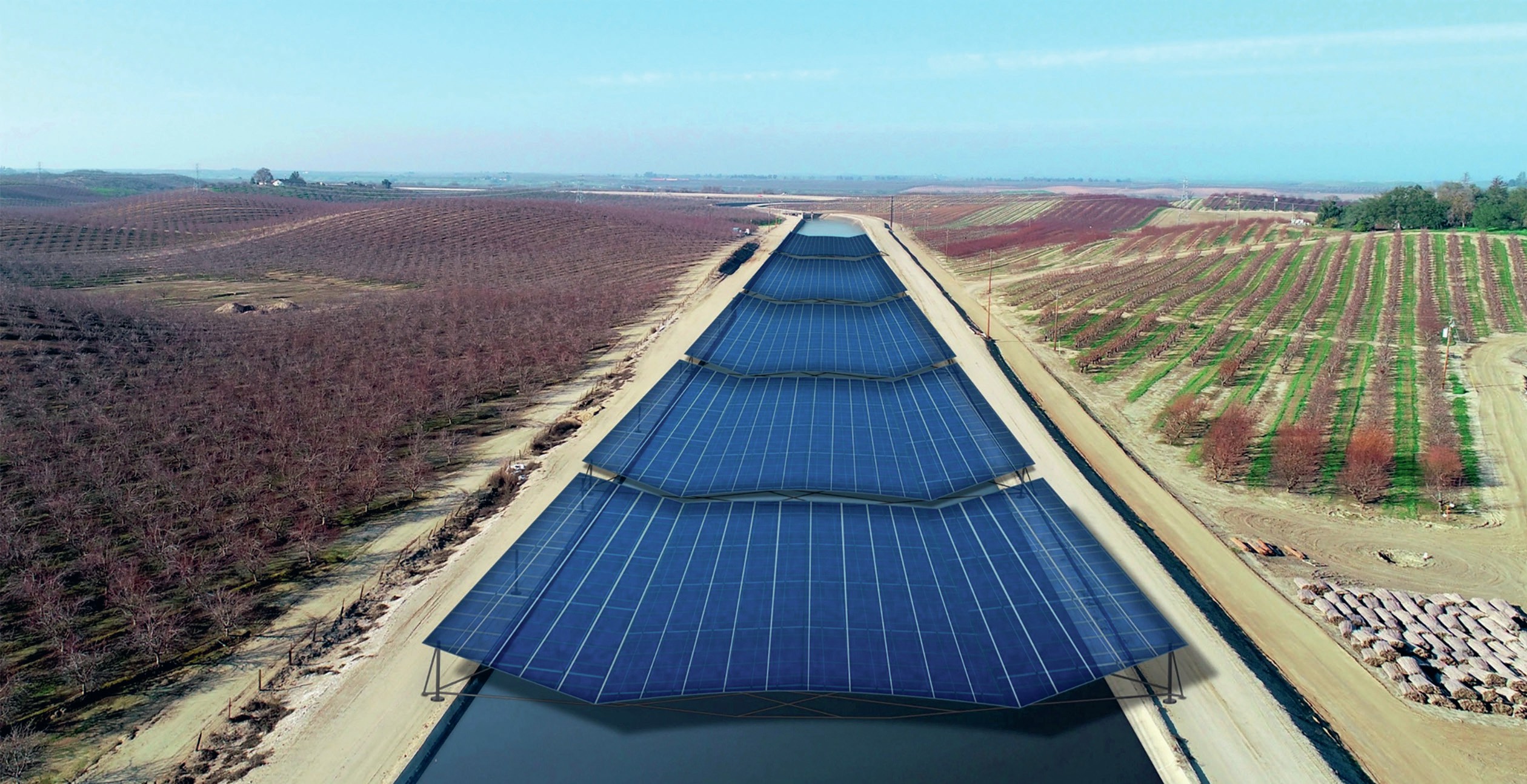
In July 2021 researchers from the University of California published a paper in the journal Nature Sustainability that set out the potential benefits of covering all 6,350 km of the state’s irrigation canals with solar panels. The results were so compelling that the state government awarded the team $20 million for a pilot project. Their modelling suggests that, for the state of California, over-canal solar could reduce evaporation losses by 39 ± 12 thousand cubic metres for every kilometre of canal. This is equivalent to over 63 billion gallons of water per annum. The estimated water savings could provide irrigation for over 50,000 acres of farmland or provide water for over 2 million people.
The team estimated that the solar panels on the canal network could generate around 13 gigawatts of energy per year. This is about half of the renewable capacity that California needs in order to meet its 2030 renewable energy goals. Putting solar panels over irrigation canals has been attempted in other parts of the world, but the Californian example is the first time a cost–benefit analysis has been conducted in the USA.
Your organisation does not have access to this article.
Sign up today to give your students the edge they need to achieve their best grades with subject expertise
Subscribe




